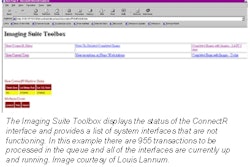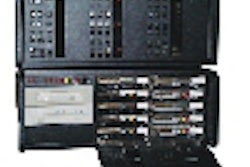SALT LAKE CITY - It’s no secret that there’s a shortage of qualified personnel in radiology these days. But locating qualified staff is just one of the problems administrators face when implementing a PACS, according to a presentation Friday at this week’s SCAR meeting.
In the talk, Rosemary Honea detailed the strategies she employed to get the funding and personnel she needed to adequately staff a PACS installed at Texas Children’s Hospital in Houston. By planning ahead, administrators considering a PACS purchase can avoid some of the growing pains that Honea encountered while building TCH’s PACS operations.
Texas Children’s began its foray into PACS in 1991 with the purchase of an ultrasound miniPACS network. In 1997 the hospital boosted its investment in digital image management by adding CT, MRI, CR, fluoroscopy, and a RIS interface, and in 2000 nuclear medicine and portable CR were incorporated. The hospital’s PACS vendor is Agfa Medical of Ridgefield Park, NJ.
Texas Children’s originally didn’t budget for additional FTEs (full-time equivalents) to operate the PACS, as it felt that the duties could be spread among existing personnel. The hospital’s first move was to look within.
"We started scouting around looking for hidden talent -- was there someone who wanted to share an employee that had some computer knowledge and wanted to learn about PACS?" Honea said. An appointment scheduler with minimal computer skills who worked weekends was willing to help during the day, while a file-room clerk would help for several hours in the evening. It wasn’t long before the administration realized that dedicated FTEs were needed, however.
This created new job opportunities for those personnel who moved into PACS, but it also created friction. Other departments began to resent the loss of their FTEs. In addition, the hospital’s human resources department treated the job changes as lateral moves -- even though the employees had learned valuable new skills -- and declined to increase the salaries of the PACS employees.
This caused resentment in the PACS group, and within a year Honea had lost four PACS analysts who had discovered that their new skills made them highly marketable to information technology employers.
The exodus prompted Honea to rewrite the job descriptions of the PACS personnel to justify higher salaries, in particular the PACS analysts, who cover service at a help desk and also provide training. As a result of the rewrite, Texas Children’s upgraded the analysts’ grade by seven steps, with a corresponding increase in pay, she said.
Nine personnel, ranging from a PACS administrator to a dedicated training specialist currently staff Texas Children’s PACS department. It’s important to maintain adequate staffing levels, as other hospital departments soon come to expect the high level of responsiveness made possible by PACS.
"The reason for getting PACS is also the reason for getting FTEs," Honea said. "Even though you’re giving [referring physicians] images faster, when it’s not working they have no tolerance, because they’re used to getting images in seconds."
Exactly how many people does it take to staff a PACS? Honea said that at Texas Children’s, the answer still isn’t clear. Her hospital is a 500-bed facility that conducts about 120,000 procedures a year, with 1,200 Web-based users of the PACS and 300 review-station users. Ultimately, a facility will have to make its own decision, based on its size and the level of service it wants to provide to referring departments.
By Brian CaseyAuntMinnie.com staff writer
May 5, 2001
Click here to post your comments about this story in our PACS Digital Community. Please include the headline of the article in your message.
Copyright © 2001 AuntMinnie.com



















